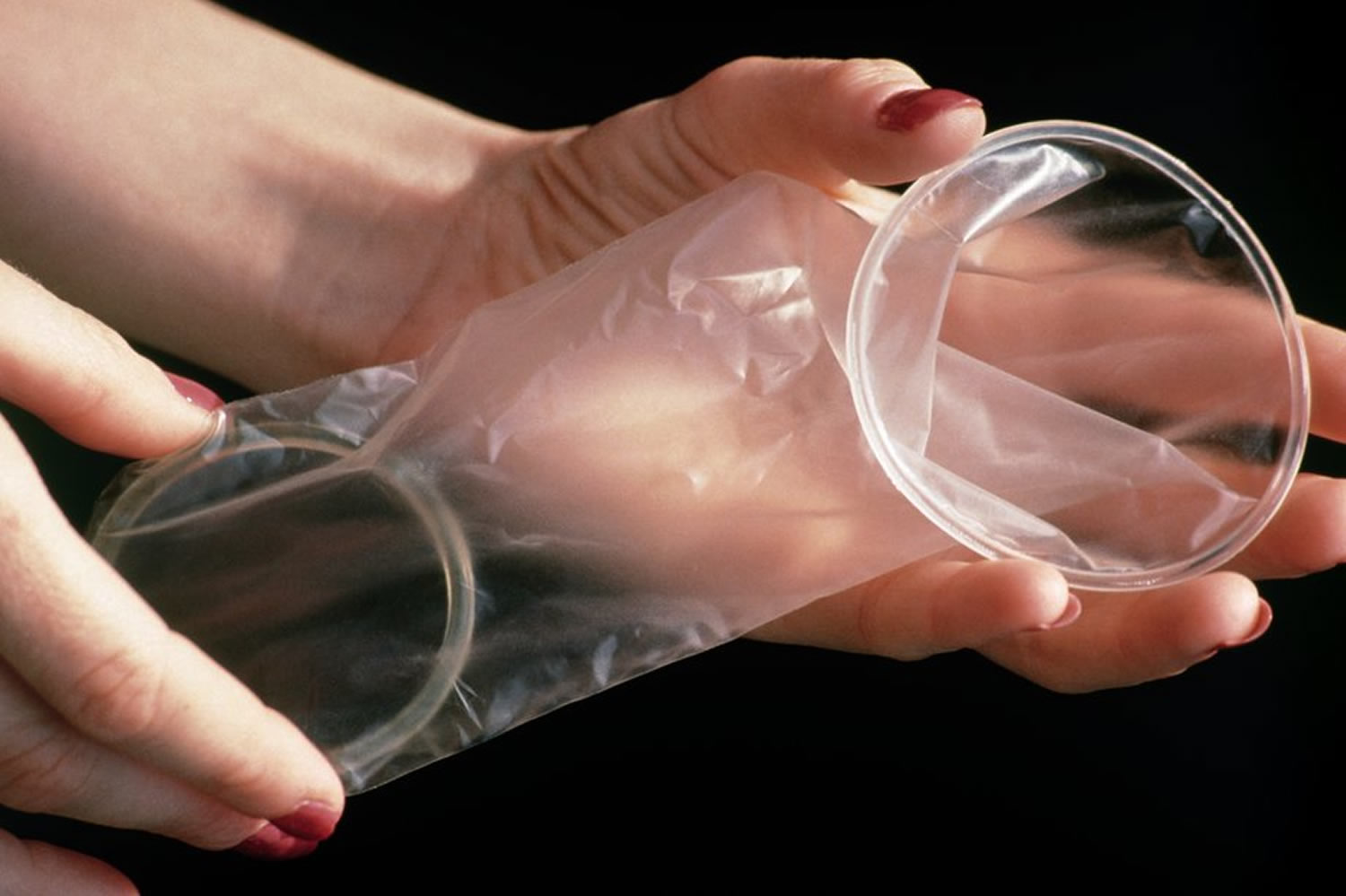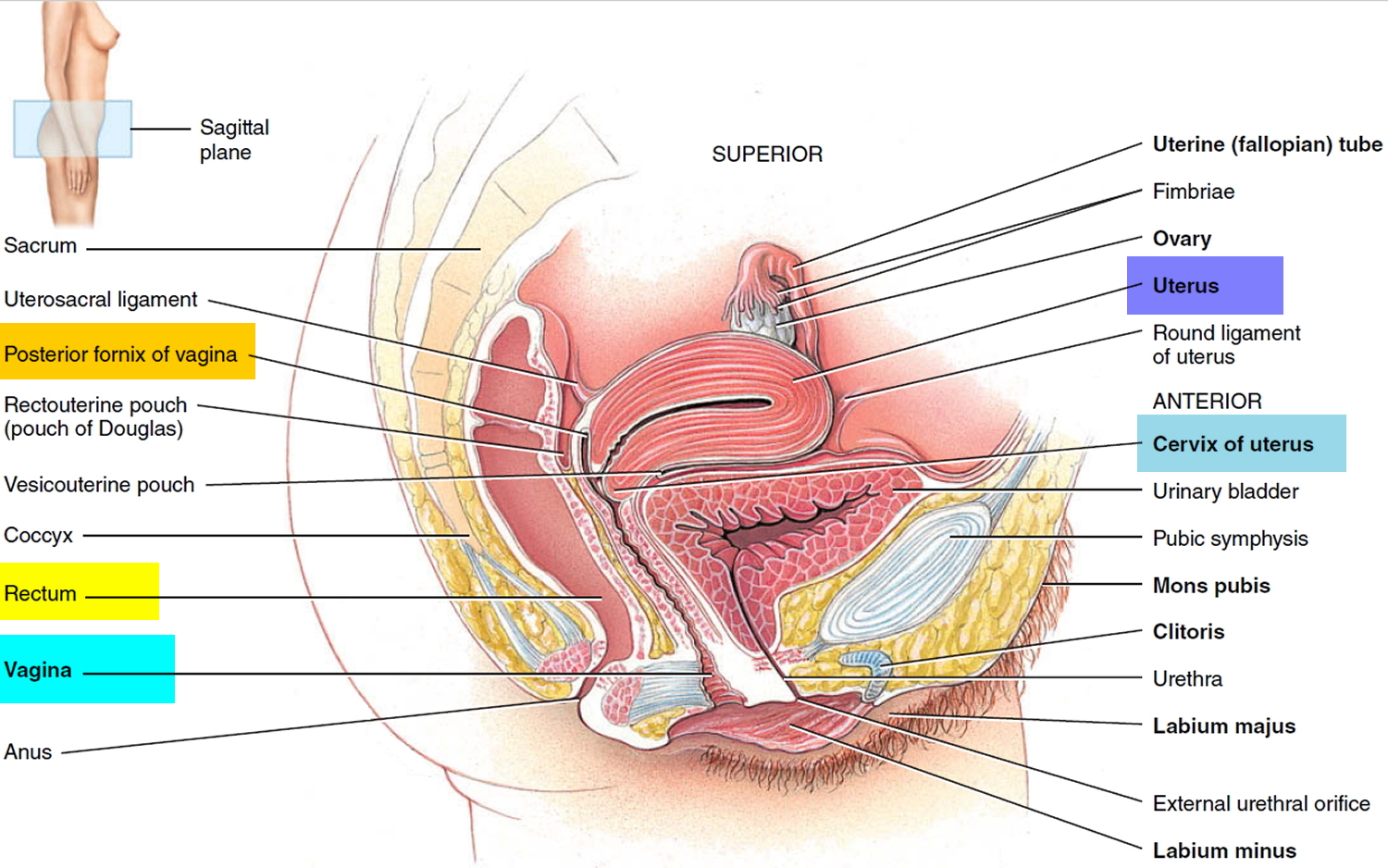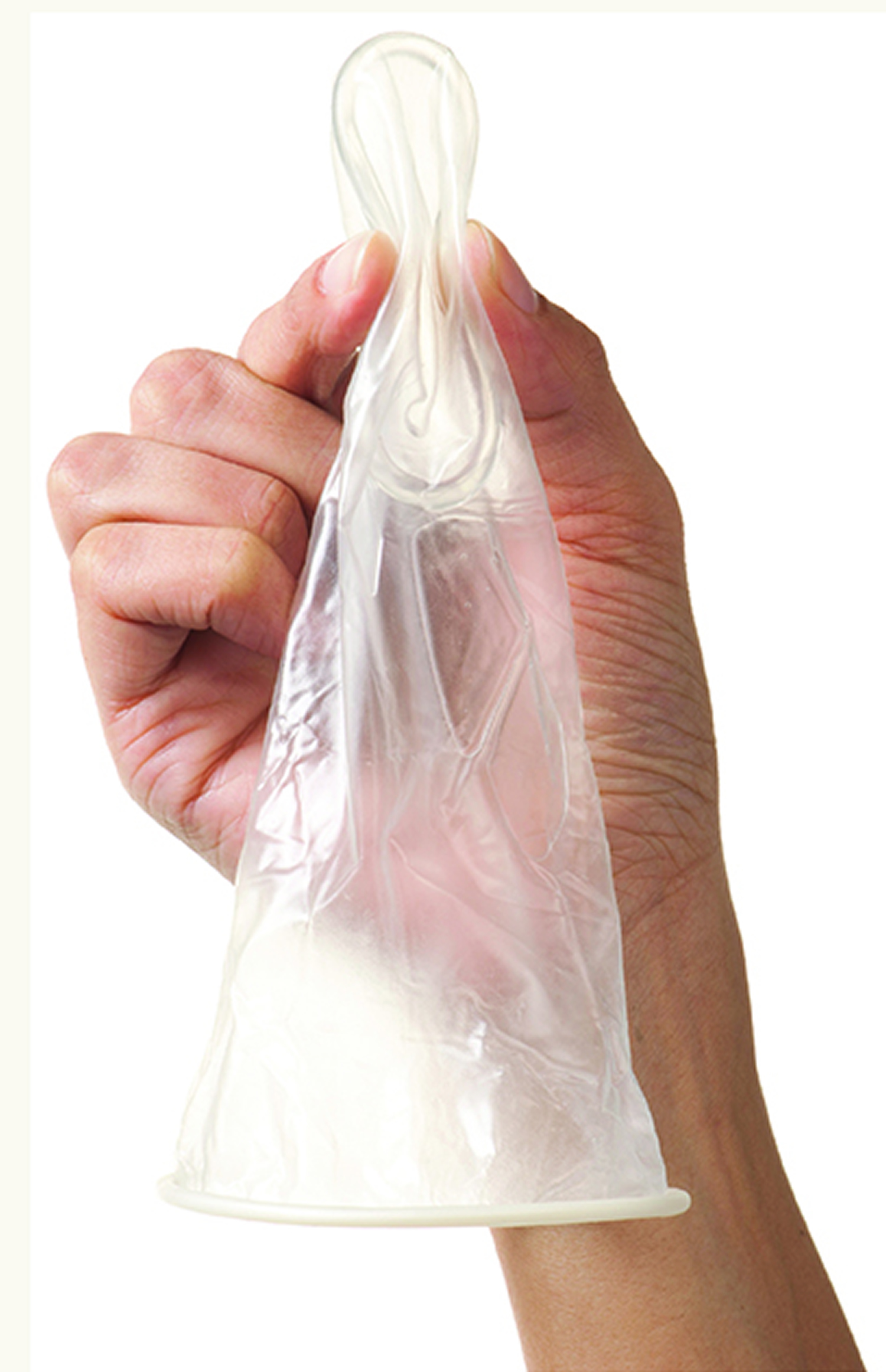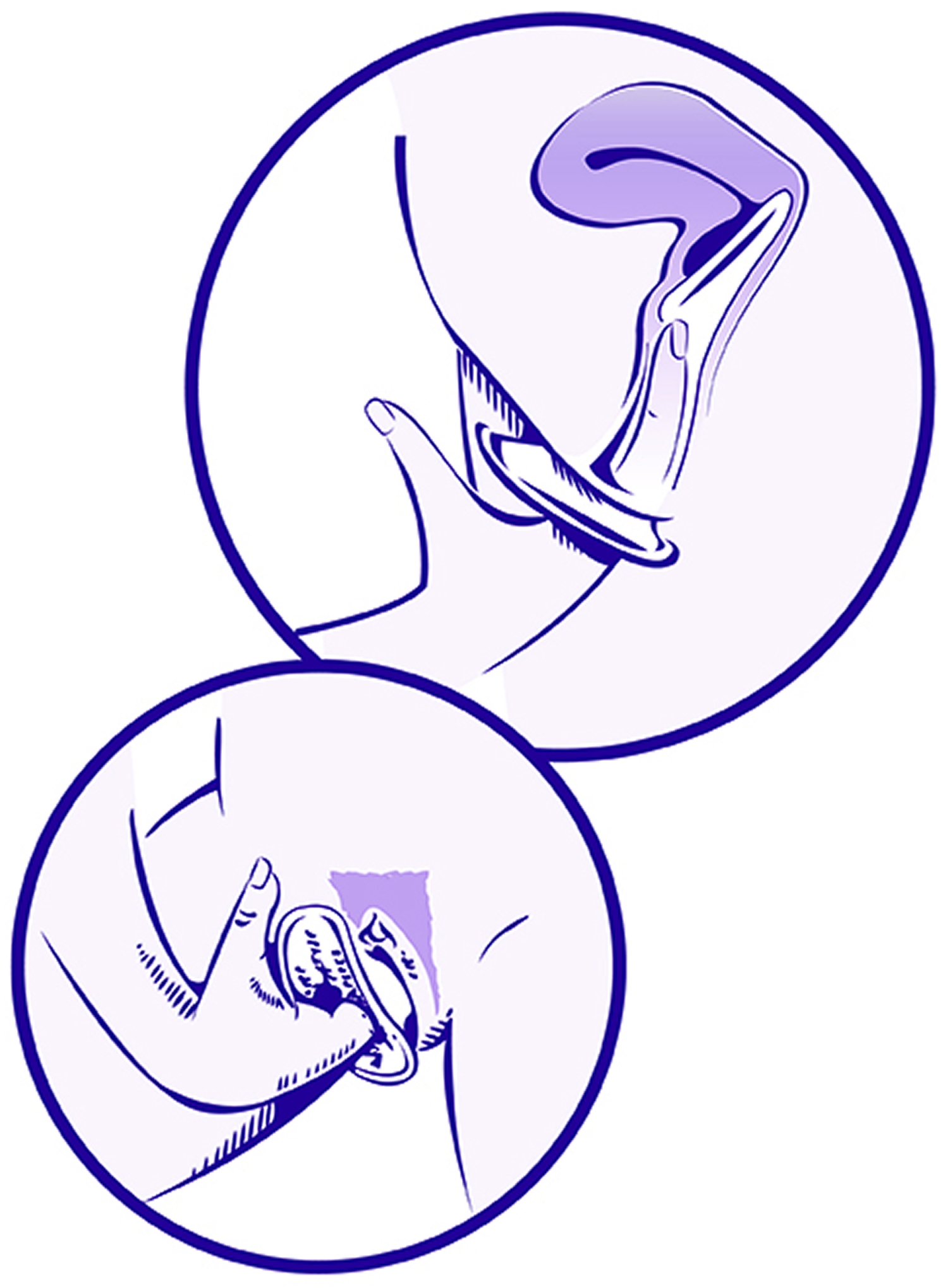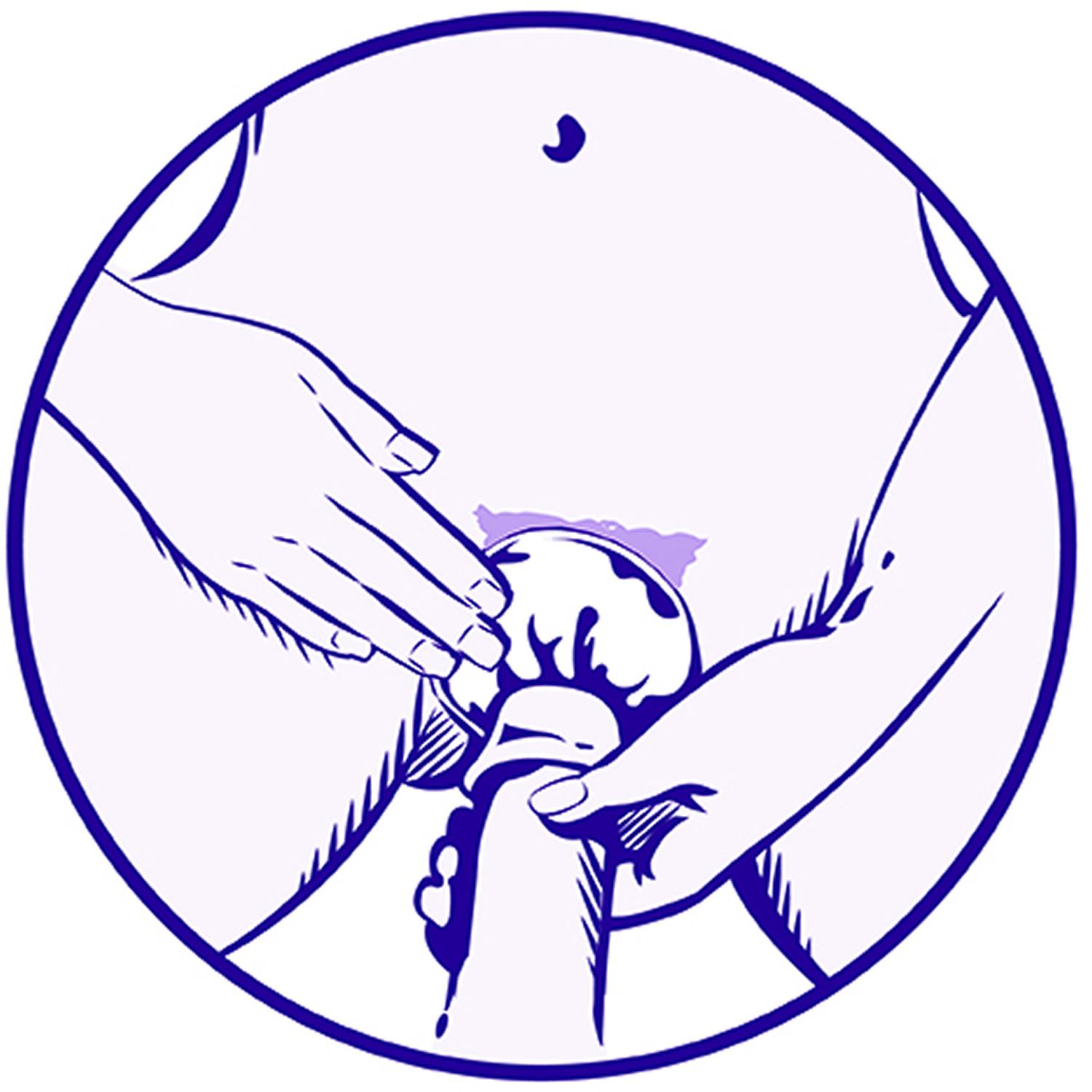Contents
- What is female condom
- Who can use female condoms?
- How to use female condom
- What to do if your female condom splits
- Alternative Contraception Options
- Types of contraception
- Condoms (male and female)
- Combined contraceptive pill
- Progestogen-only contraceptive pill
- Contraceptive implants and injections
- Diaphragms and caps
- Emergency contraception
- Intrauterine device (IUD)
- Intrauterine system (IUS)
- Vasectomy
- Female sterilization
- Vaginal ring
- Natural rhythm methods (Natural family planning)
- Which types of birth control help prevent sexually transmitted infections (STIs)?
- Types of contraception
- What is the best method of birth control?
What is female condom
Female condoms (Femidom) are made from soft thin plastic pouch called polyurethane that is 6.5 inches in length that has flexible rings at either end. Female condom is inserted into the vagina before sex to prevent pregnancy and sexually transmitted infections (STIs). Female condoms are worn inside the vagina to prevent semen getting to the womb (uterus). Female condom is a birth control (contraceptive) device that acts as a barrier to keep sperm from entering the uterus. The most common complaint is difficulty with insertion.
Female condom side effects include irritation and allergic reactions. Female condom is the only woman-controlled method that reduces the risk of transmission of sexually transmitted infections (STIs), including HIV, and it is available over-the-counter. Female condom is used by <1% of women in the U.S.
Only two female condoms — the FC1 female condom and its replacement, the FC2 female condom — have Food and Drug Administration (FDA) approval in the U.S. The FC1 female condom, which is made of plastic (polyurethane), is no longer being produced. The FC2 female condom is made of synthetic latex — safe for those with allergies to natural rubber latex — and is pre-lubricated with a silicone-based lubricant.
According to the FC2 website, the FC2 is reimbursable if you have insurance and a prescription from a doctor. Health care organizations that offer web-based (virtual) visits also may allow you to obtain a prescription to send to a pharmacy. If you don’t have insurance, you can directly purchase the female condom from the website. FC2 may also be available through universities and community health-based organizations such as Planned Parenthood.
Unlike latex — the material used to make most male condoms — female condoms are made of polyurethane and synthetic latex, which is safe for people who are allergic to natural rubber latex. Female condoms aren’t affected by dampness or changes in temperature. In addition, some women find that the female condom’s external ring stimulates the clitoris.
Key facts about the female condom:
- if used correctly, female condoms are 95 to 98% effective
- they protect against pregnancy and sexually transmitted infections (STIs)
- rarely causes allergic reactions and has minimal risk of side effects
- is available without a prescription or special fitting
- a female condom needs to be placed inside the vagina before there’s any contact with the penis
- you can place the female condom inside your vagina up to eight hours before sex.
- always buy condoms that have FDA approval, the CE mark or the BSI Kitemark on the packet – this means they’ve been tested to high safety standards
- a female condom can get pushed too far into the vagina, but it’s easy to remove them yourself if this happens
- female condoms may not be suitable for women who aren’t comfortable touching their genital area
- female condoms shouldn’t be reused – open a new one each time you have sex
- Don’t use a female condom at the same time as a male condom. They can stick together, which might cause one or both condoms to break. The female condom isn’t currently FDA-approved for anal sex.
Female condom risks
Up to 21 out of 100 women will become pregnant in a year of typical use of female condoms — possibly because they don’t use condoms every time they have sex.
The female condom has a higher failure rate than the male condom. Condom failure means it’s possible to contract sexually transmitted infections or become pregnant. The female condom may not protect you if:
- The condom breaks
- The condom slips out of the vagina
- The penis slips between the vagina and the outer surface of the condom
- The outer ring of the condom gets pushed into the vagina during sex
The female condom may also cause discomfort during insertion, a burning sensation, itching or a rash.
Who can use female condoms?
Most people can safely use female condoms. You can also use them immediately after having a baby, miscarriage or abortion.
However, they may not be suitable for women who don’t feel comfortable touching their genital area.
The female condom isn’t appropriate for everyone, however. You may want to consider another type of birth control if you:
- Are allergic to polyurethane or synthetic latex
- Are at high risk of pregnancy — you’re younger than age 30, you have sex three or more times a week, you’ve had previous contraceptive failure with vaginal
- barrier methods, or you’re not likely to consistently use the female condom
- Aren’t comfortable with the insertion technique
- Have vaginal abnormalities that interfere with the fit, placement or retention of the female condom
Advantages and disadvantages of female condoms
Advantages of female condom
- Female condoms help to protect both partners from sexually transmitted infections (STIs), including HIV (human immunodeficiency virus)
- When used correctly, they are a reliable method of preventing pregnancy
- Female condom is a form of contraception you only need to use when you have sex
- There are no serious side effects
- Female condoms can be put in any time before sex
Disadvantages of female condom
- Some couples find that putting in a condom interrupts sex – to get around this, insert it in advance or try to make doing so a part of foreplay
- Female condoms are very strong, but they may split or tear if not used properly
- They aren’t as widely available as male condoms and can be more expensive
Can anything make female condoms less effective?
Sperm can sometimes get into the vagina during sex, even when using a female condom. This may happen if:
- the penis touches the area around the vagina before a female condom is put in
- the female condom gets pushed too far into the vagina
- the penis accidentally enters between the side of the vagina and the condom
- the condom gets damaged by sharp fingernails or jewellery
If you think sperm has got into your vagina, you may need emergency contraception. The emergency contraceptive pill (sometimes called the morning-after pill). You can use emergency contraception up to 5 days after unprotected sex.
You should also consider having an sexually transmitted infection (STI) test. This can be done at a:
- sexual health or genitourinary clinic
- contraception clinic
- young people’s clinic
Where can I get female condom?
Places where you can get contraception include:
- your doctor
- Sexual Health or Family Planning Clinics
- supermarkets
- online
- pharmacies.
Figure 1. Female condom
Figure 2. Female reproductive system
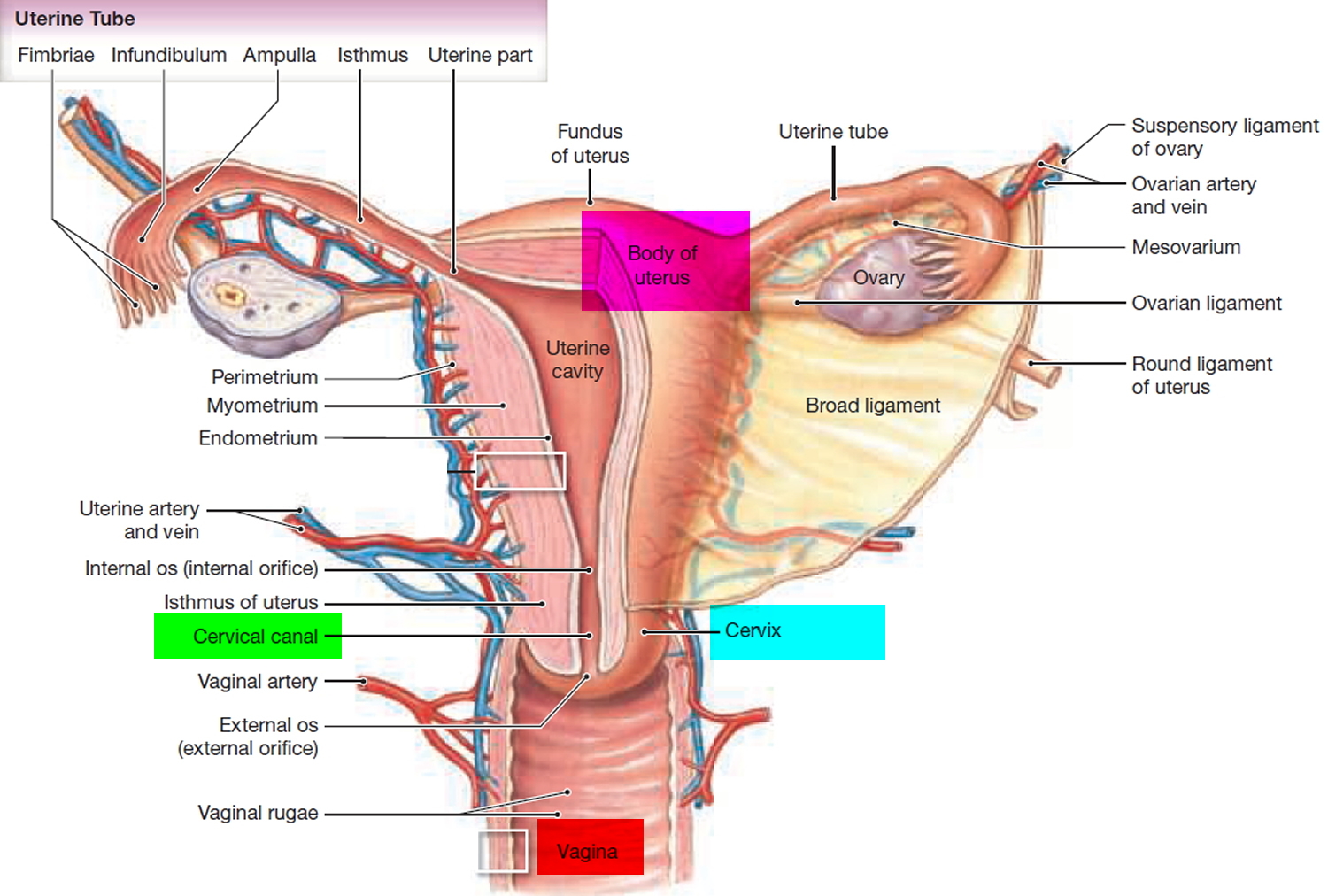
How to use female condom
Female condoms are a barrier method of contraception, worn inside the vagina. They prevent pregnancy by stopping sperm from meeting an egg.
A female condom can be put into the vagina any time before sex – but make sure the penis doesn’t come into contact with the vagina before the condom has been put in. Semen can still come out of the penis even before a man has had an orgasm (fully ejaculated).
When used correctly, condoms are the only method of contraception that protects against both pregnancy and sexually transmitted infections (STIs).
Before using a female condom, read the instructions carefully. If the condom is past its expiration date or you notice any signs of damage — such as small tears or holes — discard the condom and choose another.
Practice inserting the female condom before the first time you use it for sex. In addition, pay close attention when you first use the female condom to make sure it stays in place during sex. Never reuse a female condom.
How to put on female condom
- Open the packet and remove the female condom, taking care not to tear it – DON’T open the packet with your teeth, fingernails, scissors or a knife, which could tear the condom or you could accidentally snip a piece of the condom and make it ineffective or entirely unusable.
- Squeeze the smaller ring at the closed end of the condom and put it into the vagina, holding the soft inner ring between your forefinger or middle finger and thumb.
- Use your other hand to separate the folds of skin (labia) around the vagina, then put the squeezed ring into the vagina.
- Put your index or middle finger or both in the open end of the condom until the inner ring can be felt and push the condom as far up the vagina as possible, with the outer ring lying against the outside of the vagina
- Make sure the large outer ring at the open end of the condom covers the area around the opening of the vagina.
- Don’t allow the condom to twist. Make sure the outer ring remains outside the vagina, extending about 1 inch (or about 2.5 centimeters) beyond the labia.
- The outer ring of the condom should rest closely on the outside of the vagina at all times during sex – if the outer ring gets pushed inside the vagina, stop and put it back in the right place.
- Guide the penis into the female condom. Make sure the penis doesn’t slip between the vagina and the outer surface of the female condom. During sex, make sure the outer ring of the condom doesn’t get pushed into the vagina.
- Make sure the penis goes in the female condom, not between the condom and the side of the vagina.
- After sex, remove the female condom immediately by gently pulling it out – you can twist the large ring to prevent semen from leaking. Taking care not to spill any sperm inside the vagina. If this happens, you will need to seek advice about emergency contraception (the morning-after pill) from your doctor or pharmacist.
- Throw away the condom in a bin, not the toilet.
Using lubricant
Female condoms come pre-lubricated to make them easier to use, but you may also like to use additional lube – make sure that it is water based. Oil-based lubricants, such as lotion or baby oil, can damage latex and polyisoprene condoms, and increase the likelihood that they will break.
Figure 3. How to insert female condom – Inspect the condom
 Figure 4. How to insert female condom – Hold and Squeeze with your thumb and index finger, squeeze the small, closed ring. It will become long and narrow, making it easier to insert into your vagina.
Figure 4. How to insert female condom – Hold and Squeeze with your thumb and index finger, squeeze the small, closed ring. It will become long and narrow, making it easier to insert into your vagina.Figure 5. How to insert female condom – Inserting the condom into the vagina. You can squat, prop one leg up, sit, or lie down to do this – it’s completely up to you. Once in position, push the inner ring into your vaginal opening as far as it will go. The female condom can be a little slippery – just take it out and try again if you need to. When properly placed, it will be near your pubic bone, resting – not rubbing against or hitting – your cervix. If the female condom not inserted correctly, you may feel some discomfort. Simply shift the ring using your fingers until it sits comfortably. The outer ring will be visible outside of your vagina.
Note: Practice, practice, practice! Inserting the female condom can be tricky at first, but practicing before it’s time to have sex will give you the confidence you need to do it correctly.
Figure 6. How to insert female condom – Insert penis into the other end of the condom. The penis goes through the outer ring and into the sleeve. If, at this point, you feel any discomfort, have your partner remove his penis so that you can shift the inner ring until it sits in the correct position.
What to do if your female condom splits
If your condom splits while you are having sex, you should visit your doctor or go to your local sexual health or genitourinary medicine clinic as soon as possible.
Emergency contraception, such as the emergency pill or the intrauterine device (IUD) can be used to prevent pregnancy. Emergency contraception is available from contraception clinics, doctors that provide contraception services and sexual health clinics, but not all are able to fit the intrauterine device (IUD). The emergency contraceptive pill Levonelle and ellaOne can be bought from most pharmacies.
When can I use contraception again after having a baby?
It’s possible to become pregnant again very soon after the birth of a baby, even if you’re breastfeeding and even if your periods haven’t returned. You ovulate (release an egg) about two weeks before your period arrives, so your fertility may have returned before you realize it.
It’s important to sort out contraception from the start. If you had your baby in hospital, you should discuss contraception with your doctor or midwife before going home. You’ll also be asked about contraception at your six week postnatal check, but you can discuss it at any time with your midwife, doctor or local family planning/sexual health clinic.
You can use male and female condoms as soon as you feel ready to have sex. The combined pill, progestogen-only pill and contraceptive implants can be used from 21 days after the birth. However, the combined pill is not recommended if you are breastfeeding, as it can affect your milk supply.
You can usually have a contraceptive injection or start using a diaphragm or cap around six weeks after giving birth. If you used a diaphragm or cap before becoming pregnant, see your doctor or family planning/sexual health clinic after the birth to ensure that it still fits correctly, as childbirth and other factors such as weight loss/gain can have a significant effect. An intrauterine device (IUD) or intrauterine system (IUS) can usually be fitted 6-8 weeks after giving birth.
Alternative Contraception Options
Most types of contraception don’t protect against sexually transmitted infections (STIs). The male and female condom is the only form of contraception that protects against sexually transmitted infections (STIs) as well as preventing pregnancy. Therefore, if you’re using another type of contraception, such as the contraceptive pill, you should also use a condom to protect yourself against getting a sexually transmitted infection (STI).
Types of contraception
Condoms (male and female)
Condoms are a form of barrier contraception. They prevent pregnancy by stopping sperm from reaching and fertilizing an egg. Condoms also provide protection against sexually transmitted infections (STIs), including HIV, and stop them being passed from one sexual partner to another. Condoms are used during penetrative sex (vaginal or anal) and oral sex to protect against sexually transmitted infections (STIs).
Combined contraceptive pill
The combined contraceptive pill, usually just referred to as the pill, contains synthetic (man-made) versions of the female hormones estrogen and progesterone, which women produce naturally in their ovaries. The pill is usually taken to prevent pregnancy but it can also be used to treat:
- painful periods
- heavy periods
- premenstrual syndrome
- endometriosis.
Progestogen-only contraceptive pill
The progestogen-only pill doesn’t contain any estrogen. It is an option for women who can’t use the combined contraceptive pill, such as those over 35 years old and those who smoke.
Contraceptive implants and injections
Contraceptive implants and contraceptive injections are long-acting, effective, reversible and progestogen-only methods of contraception. They are over 99% reliable in preventing pregnancy. This means that fewer than 1 in 100 women who use the implant or injection will become pregnant each year. The injection is given every 12 weeks and the implant lasts for 3 years.
Diaphragms and caps
Diaphragms and caps are barrier methods of contraception used by women. They fit inside the vagina and prevent sperm from passing through the entrance of the womb (cervix).
Emergency contraception
A woman can use emergency contraception to prevent pregnancy after having unprotected sex, or if a method of contraception has failed. There are two types of emergency contraception:
- the emergency contraceptive pill (sometimes called the morning-after pill)
- the copper intrauterine device (IUD)
Intrauterine device (IUD)
An intrauterine device (IUD) is a small, T-shaped contraceptive device made from plastic and copper that fits inside the womb (uterus). The IUD used to be called a coil or a loop. It’s a long-acting and reversible method of contraception, which can stay in the womb for 5-10 years depending on the type.
It can also be an effective emergency contraception if fitted by a healthcare professional within five days (120 hours) of having unprotected sex. Some IUDs contain hormones that are gradually released to prevent pregnancy. These IUDs can also be used to manage heavy periods. IUDs are 99% effective.
Intrauterine system (IUS)
The intrauterine system (IUS) is similar to the intrauterine device (IUD), but it works in a slightly different way. Rather than releasing copper like the IUD, the IUS releases the hormone progestogen, which prevents pregnancy. It’s a long-acting, reversible method of contraception that lasts for five years. It can also be used for managing heavy periods.
Vasectomy
Vasectomy or ‘male sterilization’ is a simple and reliable method of contraception. It’s usually considered permanent and is therefore a big decision that should be fully discussed with your doctor beforehand. A vasectomy is a quick and relatively painless surgical procedure. It’s usually done under local anesthetic.
Female sterilization
Female sterilization is an effective form of contraception that permanently prevents a woman from being able to get pregnant. Like a vasectomy, female sterilization is a big decision that should be fully discussed with your doctor and / or your specialist.
The operation usually involves cutting or blocking the fallopian tubes, which carry eggs from the ovaries to the womb (uterus). This prevents the eggs from reaching the sperm and being fertilized. It’s a fairly minor operation and many women can return home the same day.
Vaginal ring
The vaginal ring is a small, soft plastic ring that’s placed inside the vagina on the first day of a woman’s period. It is removed after 21 days. Seven days later a new ring is used. A vaginal ring is about 4mm thick and 5.5cm in diameter. It contains estrogen and progestogen, so it’s not suitable for women who can’t take estrogen-containing contraception.
Natural rhythm methods (Natural family planning)
Natural rhythm methods (natural family planning) is when natural signs, such as body temperature, are used to identify when a woman is at her least and most fertile during each menstrual cycle, to help either avoid or plan pregnancy. Natural family planning is estimated to be around 75% effective – so 1 in 4 women using this method of birth control may still become pregnant.
Which types of birth control help prevent sexually transmitted infections (STIs)?
Only two types can protect you from STIs, including HIV: male condoms and female condoms.
While condoms are the best way to prevent STIs if you have sex, they are not the most effective type of birth control. If you have sex, the best way to prevent both STIs and pregnancy is to use what is called “dual protection.” Dual protection means you use a condom to prevent STIs each time you have sex, and at the same time, you use a more effective form of birth control, such as an IUD, implant, or shot.
What is the best method of birth control?
There is no “best” method of birth control for every woman. The birth control method that is right for you and your partner depends on many things, and may change over time.
Before choosing a birth control method, talk to your doctor or nurse about:
- Whether you want to get pregnant soon, in a few years, or never
- How well each method works to prevent pregnancy
- Possible side effects
- How often you have sex
- The number of sex partners you have
- Your overall health
- How comfortable you are with using the method (For example, can you remember to take a pill every day? Will you have to ask your partner to put on a condom each time?)
Learn about types of birth control that you or your partner can use to prevent pregnancy.
Keep in mind that even the most effective birth control methods can fail. But your chances of getting pregnant are lower if you use a more effective method.
Table 1. Types of birth control method comparison
| Birth Control Method | Number of pregnancies per 100 women within their first year of typical use1 | Side effects and risks* *These are not all of the possible side effects and risks. Talk to your doctor or nurse for more information. | How often you have to take or use |
|---|---|---|---|
| Abstinence (no sexual contact) | Unknown (0 for perfect use) | No medical side effects | No action required, but it does take willpower. You may want to have a back-up birth control method, such as condoms. |
| Permanent sterilization surgery for women (tubal ligation, “getting your tubes tied”) | Less than 1 |
| No action required after surgery |
| Permanent sterilization implant for women (Essure®) | Less than 1 |
| No action required after surgery |
| Permanent sterilization surgery for men (vasectomy) | Less than 1 |
| No action required after surgery |
| Implantable rod (Implanon®, Nexplanon®) | Less than 1 |
| No action required for up to 3 years before removing or replacing |
| Copper intrauterine device (IUD) (ParaGard®) | Less than 1 |
| No action required for up to 10 years before removing or replacing |
| Hormonal intrauterine devices (IUDs) (Liletta, Mirena®, and Skyla®) | Less than 1 |
| No action required for 3 to 5 years, depending on the brand, before removing or replacing |
| Shot/injection (Depo-Provera®) | 6 |
| Get a new shot every 3 months |
| Oral contraceptives, combination hormones (“the pill”) | 9 |
| Take at the same time every day |
| Oral contraceptives, progestin-only pill (“mini-pill”) | 9 |
| Take at the same time every day |
| Skin patch (Xulane®) | 9 May be less effective in women weighing 198 pounds or more |
| Wear for 21 days, remove for 7 days, replace with a new patch |
| Vaginal ring (NuvaRing®) | 9 |
| Wear for 21 days, remove for 7 days, replace with a new ring |
| Diaphragm with spermicide (Koromex®, Ortho-Diaphragm®) | 12 If you gain or lose than 15 pounds, or have a baby, have your doctor check you to make sure the diaphragm still fits. |
| Insert each time you have sex |
| Sponge with spermicide (Today Sponge®) | 12 (among women who have never given birth before) or 24 (among women who have given birth) |
| Insert each time you have sex |
| Cervical cap with spermicide (FemCap®) | 23 |
| Insert each time you have sex |
| Male condom | 18 |
| Use each time you have sex |
| Female condom | 21 |
| Use each time you have sex |
| Withdrawal — when a man takes his penis out of a woman’s vagina (or “pulls out”) before he ejaculates (has an orgasm or “comes”) | 22 |
| Use each time you have sex |
| Natural family planning (rhythm method) | 24 |
| Depending on method used, takes planning each month |
| Spermicide alone | 28 Works best if used along with a barrier method, such as a diaphragm |
| Use each time you have sex |
Which types of birth control can I get without a prescription?
You can buy these types of birth control over the counter at a drugstore or supermarket:
- Male condoms
- Female condoms
- Sponges
- Spermicides
- Emergency contraception pills. Plan B One-Step® and its generic versions are available in drugstores and some supermarkets to anyone, without a prescription. However you should not use Emergency contraception as your regular birth control because it does not work as well as regular birth control. Emergency contraception is meant to be used only when your regular birth control does not work for some unexpected reason.
Which types of birth control do I have to see my doctor to get?
You need a prescription for these types of birth control:
- Oral contraceptives: the pill and the mini-pill (in some states, birth control pills are now available without a prescription, through the pharmacy)
- Patch
- Vaginal ring
- Diaphragms (your doctor or nurse needs to fit one to the shape of your vagina)
- Shot/injection (you get the shot at your doctor’s office or family planning clinic)
- Cervical cap
- Implantable rod (inserted by a doctor in the office or clinic)
- IUD (inserted by a doctor in the office or clinic)
You will need surgery or a medical procedure for:
- Female sterilization (tubal ligation)
- Male sterilization (vasectomy)
- Tubal implant (Essure®)
References [ + ]
